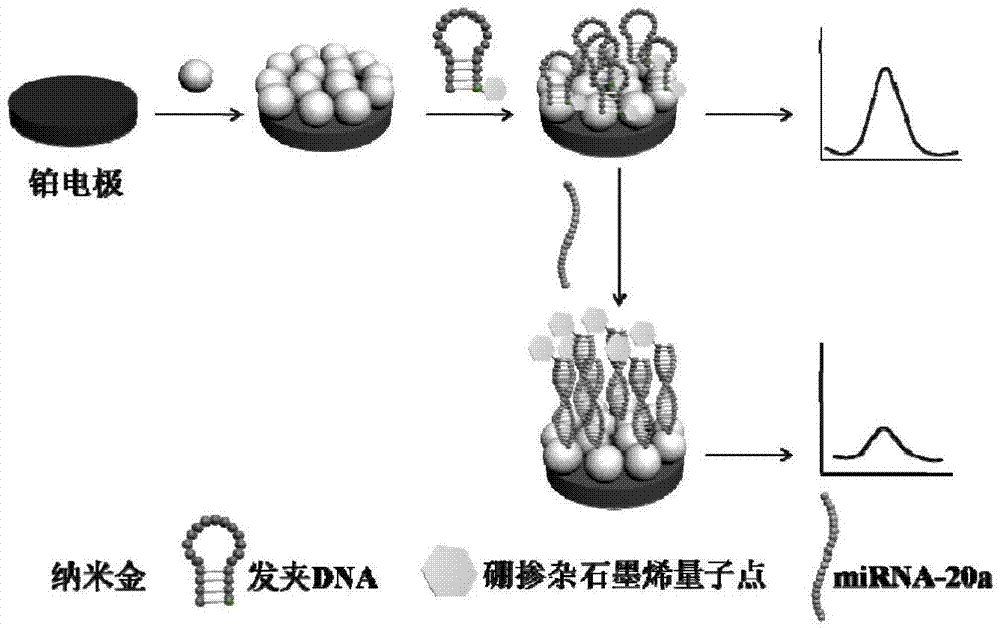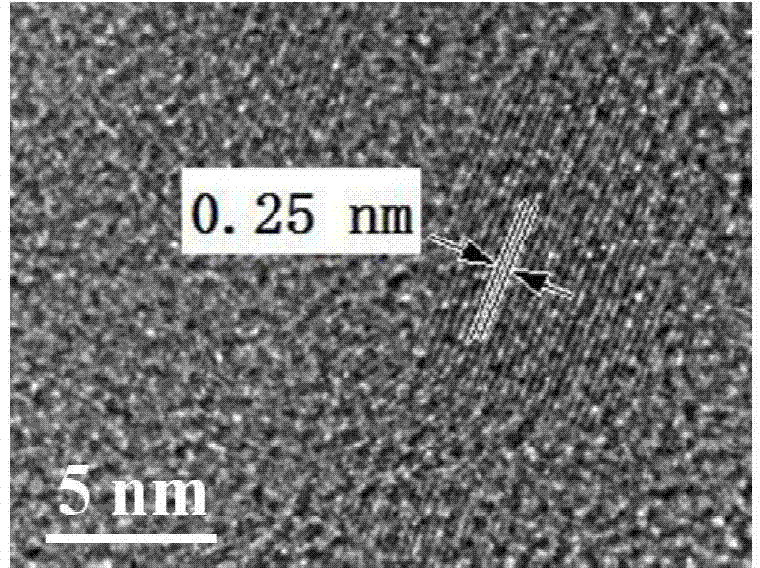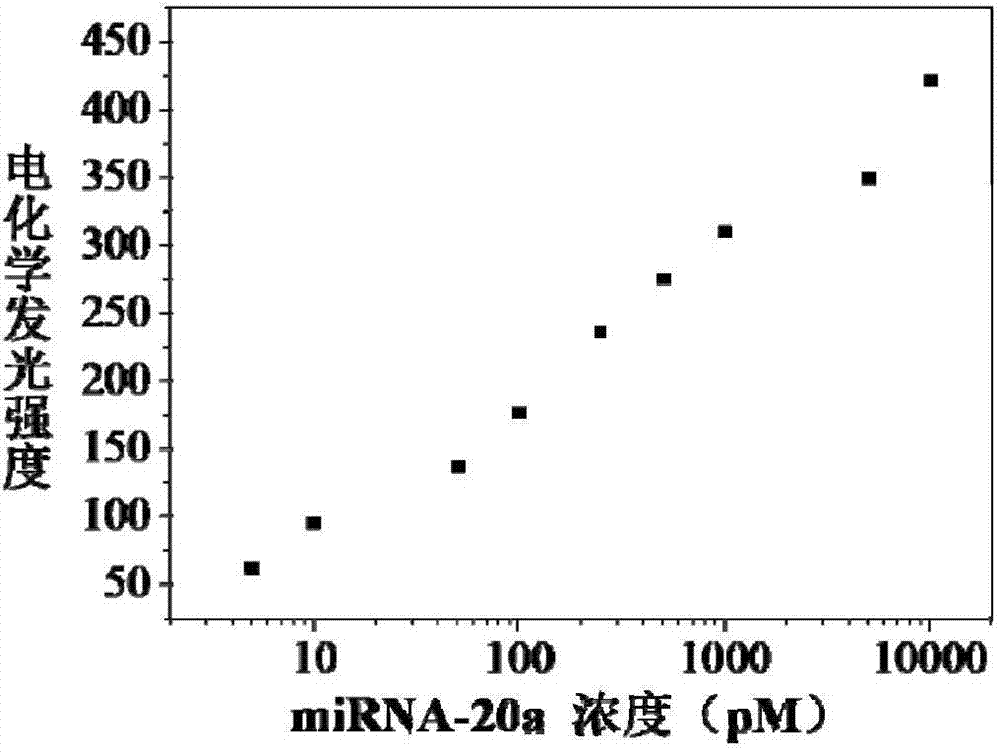Preparation of boron-doped graphene quantum dot electrochemiluminescence sensor for detecting miRNA-20a and application of sensor
A graphene quantum dot, miRNA-20a technology, applied in the field of environmental analysis, can solve the problems of complex operation, poor practicability, cumbersome and time-consuming, etc., and achieve the effects of simple operation, strong practicability and high sensitivity
- Summary
- Abstract
- Description
- Claims
- Application Information
AI Technical Summary
Problems solved by technology
Method used
Image
Examples
Embodiment 1
[0027] The preparation of electrochemiluminescence probe BGQDs-DNA comprises the following steps:
[0028] (1) Add 23ml of concentrated sulfuric acid to 1g of high-purity graphite powder in an ice bath and stir, then add 3g of potassium permanganate to the above mixture in multiple times, and continue stirring for 24 hours. Add 50ml of water and let stand for 15 minutes, then add 150ml of water and 10ml of H 2 o 2 Stop the reaction. The mixture was centrifuged, and the precipitate was washed with 5% hydrochloric acid and water, respectively, to finally obtain graphite oxide.
[0029] (2) add 0.002g H in the graphite oxide that step (1) obtains 3 BO 3, sonicate for 10 minutes to make it evenly mixed. The mixture was then transferred to a glass tube and heated to 80 °C for 12 hours in a forced air oven. The product was washed several times with water, then vacuum freeze-dried, and finally boron-doped graphene rods were obtained.
[0030] (3) The boron-doped graphene rod o...
Embodiment 2
[0033] The preparation of electrochemiluminescence probe BGQDs-DNA comprises the following steps:
[0034] (1) Add 30ml of concentrated sulfuric acid to 1.2g of high-purity graphite powder in an ice bath and stir, then add 1.8g of potassium permanganate to the above mixture in multiple times, and continue stirring for 24 hours. Add 100ml of water and let stand for 15 minutes, then add 180ml of water and 15ml of H 2 o 2 Stop the reaction. The mixture was centrifuged, and the precipitate was washed with 5% hydrochloric acid and water, respectively, to finally obtain graphite oxide.
[0035] (2) add 0.0025g H in the graphite oxide that step (1) obtains 3 BO 3 , sonicate for 10 minutes to make it evenly mixed. The mixture was then transferred to a glass tube and heated to 80 °C for 12 hours in a forced air oven. The product was washed several times with water, then vacuum freeze-dried, and finally boron-doped graphene rods were obtained.
[0036] (3) The boron-doped graphen...
Embodiment 3
[0039] Configure the determination of miRNA-20a content in the sample:
[0040] (1) Add 25ml of concentrated sulfuric acid to 1.2g of high-purity graphite powder in an ice bath and stir, then add 1.5g of potassium permanganate to the above mixture in multiple times, and continue stirring for 24 hours. Add 45ml of water and let stand for 15 minutes, then add 200ml of water and 15ml of H 2 o 2 Stop the reaction. The mixture was centrifuged, and the precipitate was washed with 5% hydrochloric acid and water, respectively, to finally obtain graphite oxide.
[0041] (2) add 0.0045g H in the graphite oxide that step (1) obtains 3 BO 3 , sonicate for 10 minutes to make it evenly mixed. The mixture was then transferred to a glass tube and heated to 80 °C for 12 hours in a forced air oven. The product was washed several times with water, then vacuum freeze-dried, and finally boron-doped graphene rods were obtained.
[0042] (3) The boron-doped graphene rod obtained in step (2) i...
PUM
| Property | Measurement | Unit |
|---|---|---|
| particle diameter | aaaaa | aaaaa |
| current density | aaaaa | aaaaa |
| current density | aaaaa | aaaaa |
Abstract
Description
Claims
Application Information
 Login to View More
Login to View More - R&D
- Intellectual Property
- Life Sciences
- Materials
- Tech Scout
- Unparalleled Data Quality
- Higher Quality Content
- 60% Fewer Hallucinations
Browse by: Latest US Patents, China's latest patents, Technical Efficacy Thesaurus, Application Domain, Technology Topic, Popular Technical Reports.
© 2025 PatSnap. All rights reserved.Legal|Privacy policy|Modern Slavery Act Transparency Statement|Sitemap|About US| Contact US: help@patsnap.com



